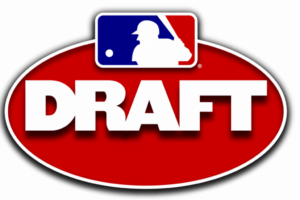State of the System: Outfield
Positional Overview:
In 2013 Rick Hahn acquired two players that are expected to be long-term pieces in the Chicago White Sox outfield in Adam Eaton and Avisail Garcia. I love the Eaton acquisition in particular and think he is an ideal leadoff hitter for this team. Dayan Viciedo, after a solid debut campaign in 2012, was not able to kick-on in 2013 and has now produced two significantly below average defensive seasons in left field, making him a potential DH candidate going forward. Alejandro De Aza is a useful player, but probably not a long-term solution. In the minors, the Sox are stacked with disappointing outfield prospects (Jared Mitchell, Keenyn Walker, Trayce Thompson, Courtney Hawkins). Despite the disappointments, this can still be a position of strength for the Sox. Many are expectant of a bounce-back season from Hawkins, and the 2013 draft added two potential high upside guys in Jacob May and Adam Engel, along with the IFA signing of über-talented Micker Adolfo.
Will Avisail Garcia grow into his power potential?
Scouts rave about Avisail Garcia’s power potential and his ability to hit bombs in batting practice, but it hasn’t yet translated to the level of power that you would expect from a prototypical corner outfielder in games. If you look at his Minor League career, there are some encouraging signs. His ISO (SLG%-AVG) has improved each year, from a modest .060 in 2009, to .075 in ’10, .125 in ’11, .155 in ’12 and then a solid .183 last year. In his brief MLB career Garcia has displayed one trait that could potentially limit his ability to hit home runs and that is a high ground ball rate. Last year from all players who had an ISO of at least .160 in the Majors, only one player, Wilson Ramos, had a ground ball/fly ball rate above 2:1. Avisail Garcia’s GB/FB rate last year was 2.19. For his entire MLB career he has hit 132 GB/53 FB (2.49 GB/FB). This is too high. If Garcia is to become a big power threat and home run hitter then he will need to start lifting the ball more often, decreasing his GB/FB rate to somewhere nearer 1.5, or lower. For comparison, the top power hitter in baseball last year, Chris Davis, had a GB/FB of 0.71 (and 0.88 career mark), while Miguel Cabrera was at 1.03 last year (and 1.12 for his career). If Garcia addresses this issue I think he could see a big spike in his power numbers. Given that Avisail is walk averse, it is essential that he starts to hit for more power otherwise his offensive value will be very limited.
Is Jordan Danks worth a shot?
I like Jordan Danks and I think he could bring a lot to the Sox if you are willing to live with the lack of contact. Strikeouts will always be a big part of Danks’ game, and will likely prevent him from ever being a starter at the Major League level, but every other facet of his game could be average or better. Despite being a .230 hitter, his patience at the plate means he will still out-OBP Viciedo, and possibly Avisail Garcia, too. He has solid pop, decent speed, and is a very capable defensive outfielder. There is a lot of value in that, especially if his defense turns out to be as good as the Sox brass has been claiming for the past five years.
Top Prospect:
Courtney Hawkins– There isn’t much I can add about Hawkins that hasn’t already been said regarding his disastrous 2013 season. As a 19 year old in Advanced-A, Miguel Cabrera put up an ISO of .150. At the same age and level, Hawkins’ ISO last year was .204. His power is a special tool. He just needs to work on building his confidence and making more consistent contact. I have faith in Hawkins’ ability to rebound this year, and think he’ll be a top 100 guy again by the end of the year.
Best of the Rest:
Micker Adolfo– Adolfo (who I wish had gone with the name Zapata, which is awesome), is loaded with tools, has monstrous upside and is probably second only to Hawkins in terms of ultimate ceiling in this system. If given an aggressive assignment to the AZL in ’14 as has been reported, then I predict he may struggle, though if he goes there and performs then he’ll be an easy top-100 prospect in baseball come the end of the year.
Adam Engel– Engel is an excellent athlete with plus-plus speed and was one of the fastest players in the 2013 draft. His defense in center field is rated as similarly excellent. His bat lags behind the other areas at present, though he did impress in his pro debut with a good approach at the plate and an excellent contact rate. Engel’s power may be no more than an average tool going forward, so it’s important he gets on base consistently if he’s going to provide positive value with the bat. A leadoff hitter in MLB if all goes well.
Jacob May– May is another good athlete with plus speed and defense in CF, and like Engel, he also made a positive start to his pro career, showing more power than expected. The bat needs work and his hit and power tools only project as average, but he is still very raw for a college pick so has lots of room to improve. Again, a potential leadoff hitter if all goes well.
Jared Mitchell– An excellent Arizona Fall League campaign last year may be the only thing preventing us from completely writing Mitchell off after an otherwise abject 2013 campaign. If we’re looking for positives then Mitchell’s consistently excellent BB rates are a good place to start, and he has shown plus power at times, though not in 2013 (aside from AFL action). I’m sure Mitchell’s AFL performance will prove to only be a tease to us White Sox fans and prospect watchers, but who knows…
Trayce Thompson– On the surface, 2013 was a disappointing year for Thompson, as he hit just .229 and had the lowest power output of his career (.154 ISO). The big positive for me was that he cut his K% to a respectable 23.6%, after sitting in the 28-30% range in his career before that. It may just prove to be an aberration in his career, but a lack of contact has always been the main drawback with Trayce, and so this is potentially a big development for him. His average was low but his BABIP (.280) was also the lowest of his career so he may have just been hitting into some bad luck. It may be asking a lot, but if Thompson can revert back to his 2012 power while maintaining this improved contact rate and his usual 10% BB rate, then he could finally become the player that we’ve been hoping he would be.
Keenyn Walker– Keenyn Walker is the least disappointing of the ‘disappointing outfielder’ quartet, though only because expectations were never that high to begin with. Again, if we are looking for positives, Walker does walk at a good rate and has good speed and athleticism, but he strikes out a lot and has limited power. If all goes well for him he could potentially make it as a light hitting, speedy fourth outfielder type.
Keep an eye on…
Jacob Morris– An extreme outcome player last year in his pro debut, with every PA seemingly leading to one of three results: HR, BB or, most commonly, SO. He does have some legitimate power potential though, which makes him one to watch, though the long swing and high strikeout rate will make it tough for him to ever maximize his potential. Good arm in the OF, too.






